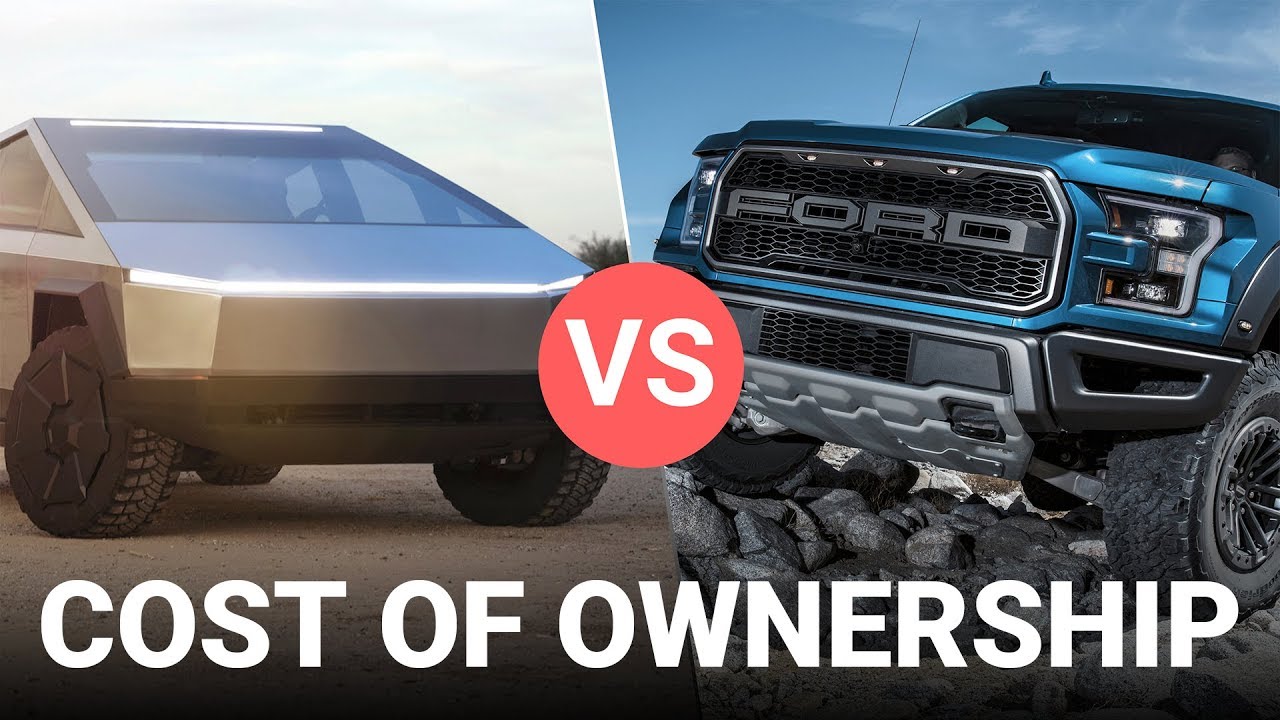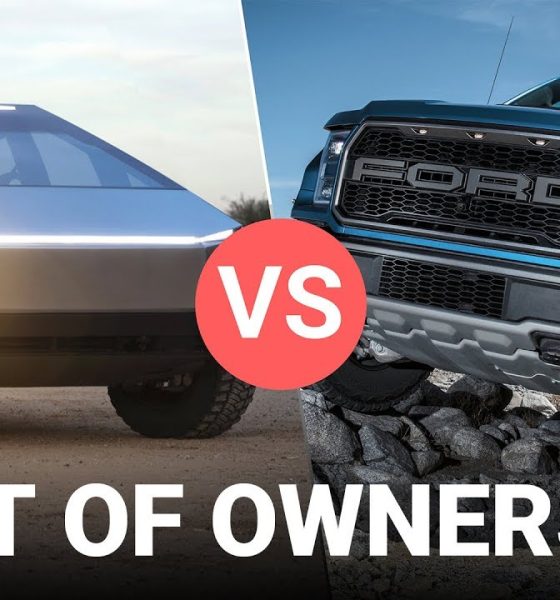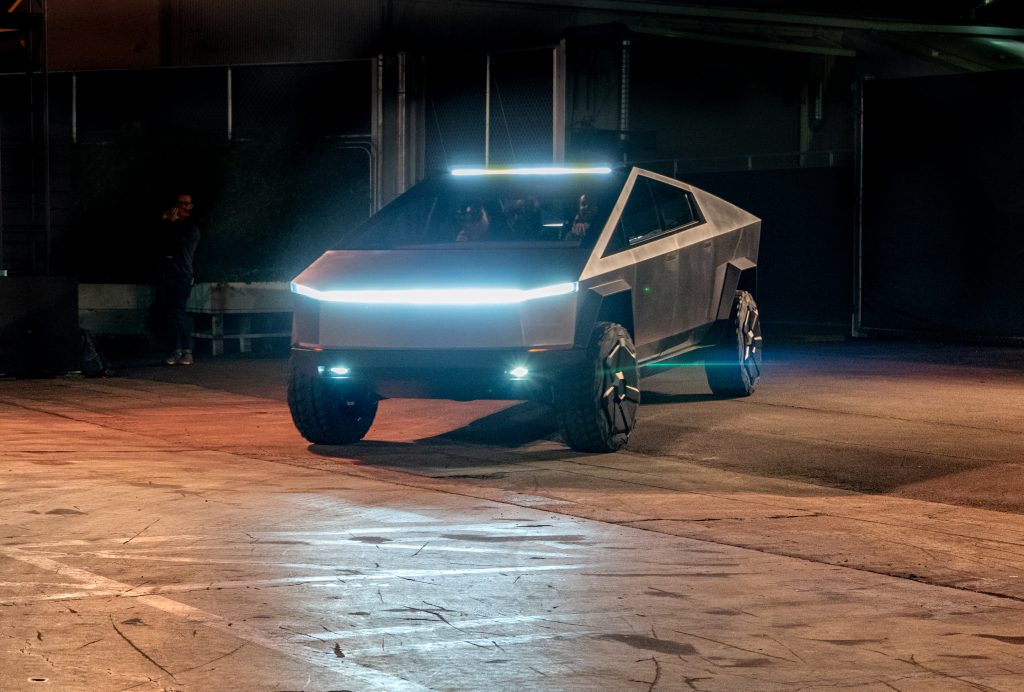

News
Tesla Cybertruck vs Ford F-150: Cost of ownership battle ends with eye-opening results
The Tesla Cybertruck offers several benefits that make it an ideal alternative to conventional pickup trucks like the best-selling Ford F-150. But beyond its polarizing design and healthy set of features, one thing may really be the difference-maker for customers who are considering a Cybertruck purchase: its cost of ownership.
Pickups are very popular in the United States, holding about 17% of the US auto sales market last year. Yet, for all their popularity, trucks are also notoriously expensive to own, thanks to their large engines that guzzle fuel. Considering that the Tesla Cybertruck promises a lower cost of ownership compared to traditional trucks like the Ford F-150, it then becomes pertinent to run the numbers between the futuristic upstart and the tried-and-tested veteran.
This was the topic of a recent video from Tesla owner-enthusiast Ben Sullins of YouTube’s Teslanomics channel. In his video, Sullins compared the cost of ownership between the Tesla Cybertruck and the Ford F-150 over a five-year period. The results were notably eye-opening.

Sullins opted to utilize the Ford F-150 because it is the most popular pickup in the United States. He also selected the 2020 Ford F-150 Lariat SuperCrew as the truck of choice for his comparison, since the variant was the trim which received Edmunds‘ recommendation. This version was compared with the Tesla Cybertruck’s Dual Motor AWD variant, which CEO Elon Musk noted was receiving the majority of reservations from consumers. To make the comparison as fair as possible, Sullins opted for options in the F-150 that would make it as similar to the mid-level Cybertruck as possible, such as 4×4 and a six-seat configuration.
For the vehicle’s true cost of ownership over 5 years, the Teslanomics host referred to Edmunds‘ TCO metrics, which includes Depreciation, Taxes and Fees, Financing, Fuel, Insurance, Repairs, and Maintenance. Considering that the Cybertruck is not on the road yet, Sullins opted to estimate the all-electric pickup’s depreciation, taxes and fees, and financing on the F-150’s numbers. The same was true for the Cybertruck’s estimated insurance costs.
Things started to diverge when maintenance and fuel costs between the two vehicles were considered. The Tesla Cybertruck’s maintenance will likely be marginal compared to the F-150, which is equipped with an internal combustion engine. Fuel costs were also very different between the two vehicles. If one were to consider the average price of fuel in CA and TX and a yearly mileage of 15,000 miles, a Ford F-150 owner in CA could spend about $3,183 in fuel costs per year considering the state’s average fuel cost of $3.82 per gallon. An F-150 owner in TX, where gas prices average $2.24 per gallon, could spend about $1,866 per year in fuel costs.

In comparison, a Cybertruck owner in CA, where electricity costs a pretty steep $0.26 per kWh on average, will spend about $1,950 in charging costs for a year. A Cybertruck owner from TX, where electricity costs $0.09 per kWh, could spend as little as $675 per year. It’s pertinent to note that these costs do not account for off-peak hours, where electricity is cheaper.
Overall, Sullins estimated that the total cost of ownership for a Ford F-150 in CA would be around $72,459 over five years, while one in TX stands at about $65,467. Thanks to low charging and maintenance costs, the Cybertruck would likely have a TCO of $53,379 in CA and $46,610 in TX, respectively. That’s a difference of $19,080 and $18,858 over the course of five years. Of course, if a Tesla owner charges the Cybertruck through solar panels, then the TCO of the all-electric vehicle will be even lower.
Inasmuch as the Cybertruck is polarizing for its looks, it is difficult not to see the value of the vehicle when it comes to cost of ownership compared to traditional pickups. This is something that is key to potential Cybertruck customers such as companies that are managing fleets of vehicles. If something like the Cybertruck comes along and offers the same utility and better performance while offering lower operating costs, there is very little incentive to ignore the vehicle just because it doesn’t look like every other pickup in the market.
Watch Ben Sullins’ breakdown of the Tesla Cybertruck and the Ford F-150’s cost of ownership in the video below.

Elon Musk
Elon Musk’s X will start using a Tesla-like software update strategy
The initiative seems designed to accelerate updates to the social media platform, while maintaining maximum transparency.

Elon Musk’s social media platform X will adopt a Tesla-esque approach to software updates for its algorithm.
The initiative seems designed to accelerate updates to the social media platform, while maintaining maximum transparency.
X’s updates to its updates
As per Musk in a post on X, the social media company will be making a new algorithm to determine what organic and advertising posts are recommended to users. These updates would then be repeated every four weeks.
“We will make the new 𝕏 algorithm, including all code used to determine what organic and advertising posts are recommended to users, open source in 7 days. This will be repeated every 4 weeks, with comprehensive developer notes, to help you understand what changed,” Musk wrote in his post.
The initiative somewhat mirrors Tesla’s over-the-air update model, where vehicle software is regularly refined and pushed to users with detailed release notes. This should allow users to better understand the details of X’s every update and foster a healthy feedback loop for the social media platform.
xAI and X
X, formerly Twitter, has been acquired by Elon Musk’s artificial intelligence startup, xAI last year. Since then, xAI has seen a rapid rise in valuation. Following the company’s the company’s upsized $20 billion Series E funding round, estimates now suggest that xAI is worth tens about $230 to $235 billion. That’s several times larger than Tesla when Elon Musk received his controversial 2018 CEO Performance Award.
As per xAI, the Series E funding round attracted a diverse group of investors, including Valor Equity Partners, Stepstone Group, Fidelity Management & Research Company, Qatar Investment Authority, MGX, and Baron Capital Group, among others. Strategic partners NVIDIA and Cisco Investments also continued support for building the world’s largest GPU clusters.
News
Tesla FSD Supervised wins MotorTrend’s Best Driver Assistance Award
The decision marks a notable reversal for the publication from prior years, with judges citing major real-world improvements that pushed Tesla’s latest FSD software ahead of every competing ADAS system.

Tesla’s Full Self-Driving (Supervised) system has been named the best driver-assistance technology on the market, earning top honors at the 2026 MotorTrend Best Tech Awards.
The decision marks a notable reversal for the publication from prior years, with judges citing major real-world improvements that pushed Tesla’s latest FSD software ahead of every competing ADAS system. And it wasn’t even close.
MotorTrend reverses course
MotorTrend awarded Tesla FSD (Supervised) its 2026 Best Tech Driver Assistance title after extensive testing of the latest v14 software. The publication acknowledged that it had previously criticized earlier versions of FSD for erratic behavior and near-miss incidents, ultimately favoring rivals such as GM’s Super Cruise in earlier evaluations.
According to MotorTrend, the newest iteration of FSD resolved many of those shortcomings. Testers said v14 showed far smoother behavior in complex urban scenarios, including unprotected left turns, traffic circles, emergency vehicles, and dense city streets. While the system still requires constant driver supervision, judges concluded that no other advanced driver-assistance system currently matches its breadth of capability.
Unlike rival systems that rely on combinations of cameras, radar, lidar, and mapped highways, Tesla’s FSD operates using a camera-only approach and is capable of driving on city streets, rural roads, and freeways. MotorTrend stated that pure utility, the ability to handle nearly all road types, ultimately separated FSD from competitors like Ford BlueCruise, GM Super Cruise, and BMW’s Highway Assistant.
High cost and high capability
MotorTrend also addressed FSD’s pricing, which remains significantly higher than rival systems. Tesla currently charges $8,000 for a one-time purchase or $99 per month for a subscription, compared with far lower upfront and subscription costs from other automakers. The publication noted that the premium is justified given FSD’s unmatched scope and continuous software evolution.
Safety remained a central focus of the evaluation. While testers reported collision-free operation over thousands of miles, they noted ongoing concerns around FSD’s configurable driving modes, including options that allow aggressive driving and speeds beyond posted limits. MotorTrend emphasized that, like all Level 2 systems, FSD still depends on a fully attentive human driver at all times.
Despite those caveats, the publication concluded that Tesla’s rapid software progress fundamentally reshaped the competitive landscape. For drivers seeking the most capable hands-on driver-assistance system available today, MotorTrend concluded Tesla FSD (Supervised) now stands alone at the top.
News
Elon Musk’s Grokipedia surges to 5.6M articles, almost 79% of English Wikipedia
The explosive growth marks a major milestone for the AI-powered online encyclopedia, which was launched by Elon Musk’s xAI just months ago.

Elon Musk’s Grokipedia has grown to an impressive 5,615,201 articles as of today, closing in on 79% of the English Wikipedia’s current total of 7,119,376 articles.
The explosive growth marks a major milestone for the AI-powered online encyclopedia, which was launched by Elon Musk’s xAI just months ago. Needless to say, it would only be a matter of time before Grokipedia exceeds English Wikipedia in sheer volume.
Grokipedia’s rapid growth
xAI’s vision for Grokipedia emphasizes neutrality, while Grok’s reasoning capabilities allow for fast drafting and fact-checking. When Elon Musk announced the initiative in late September 2025, he noted that Grokipedia would be an improvement to Wikipedia because it would be designed to avoid bias.
At the time, Musk noted that Grokipedia “is a necessary step towards the xAI goal of understanding the Universe.”
Grokipedia was launched in late October, and while xAI was careful to list it only as Version 0.1 at the time, the online encyclopedia immediately earned praise. Wikipedia co-founder Larry Sanger highlighted the project’s innovative approach, noting how it leverages AI to fill knowledge gaps and enable rapid updates. Netizens also observed how Grokipedia tends to present articles in a more objective manner compared to Wikipedia, which is edited by humans.
Elon Musk’s ambitious plans
With 5,615,201 total articles, Grokipedia has now grown to almost 79% of English Wikipedia’s article base. This is incredibly quick, though Grokipedia remains text-only for now. xAI, for its part, has now updated the online encyclopedia’s iteration to v0.2.
Elon Musk has shared bold ideas for Grokipedia, including sending a record of the entire knowledge base to space as part of xAI’s mission to preserve and expand human understanding. At some point, Musk stated that Grokipedia will be renamed to Encyclopedia Galactica, and it will be sent to the cosmos.
“When Grokipedia is good enough (long way to go), we will change the name to Encyclopedia Galactica. It will be an open source distillation of all knowledge, including audio, images and video. Join xAI to help build the sci-fi version of the Library of Alexandria!” Musk wrote, adding in a later post that “Copies will be etched in stone and sent to the Moon, Mars and beyond. This time, it will not be lost.”








